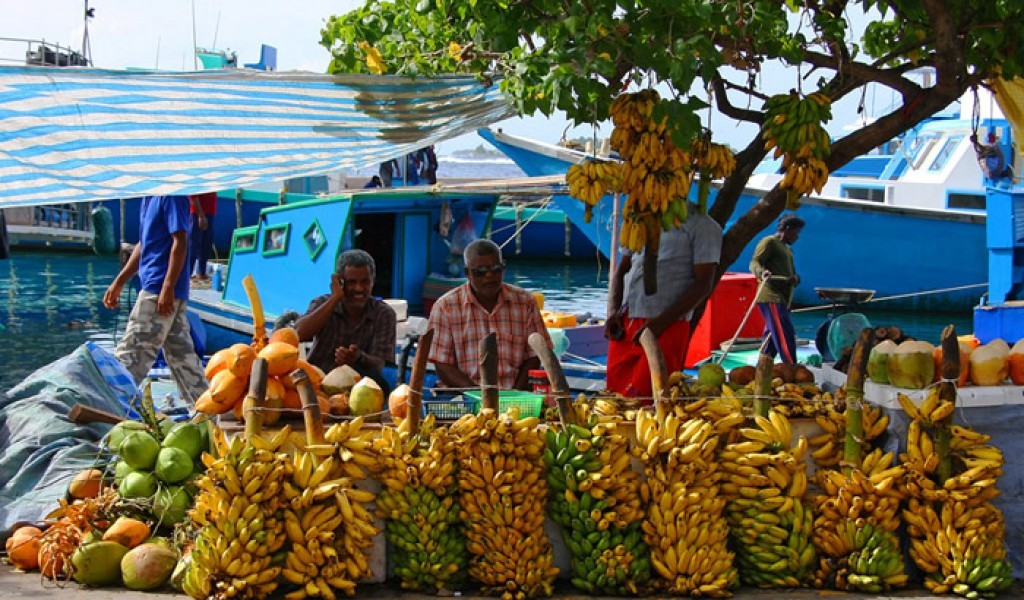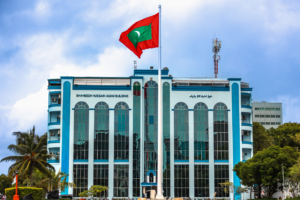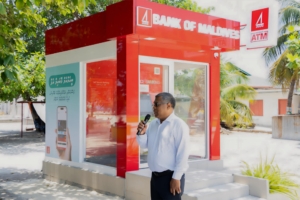Male’, Maldives – According to the quarterly GDP summery of the national accounts report published by the National Bureau of Statistics (NBS), the GDP growth rate of the Maldivian economy for the second quarter of the year has gone down by -51.6 percent compared to the same quarter of 2019 due to the action taken against the Covid-19 pandemic.
The worst hit sector has been the tourism industry with a growth rate of -25.5 percent of the whole economy as the sector had a GVA (Gross Value Added) of MVR 91 million which is a -98.0 percent growth decline of the sector compared to the corresponding quarter of 2019. Compared to the previous quarter of this year, this is a decline of -98.2 percent for the sector. As the Covid-19 cases started to increase within the country, specially in the capital city of Male’, the government closed off the borders on March 27 and remained closed throughout the second quarter of this year.
Wholesale and retail trade also saw a decline of -55.6 percent in growth in the second quarter with a GVA (Gross Value Added) of MVR 652 million as imports deflated with the hindrance caused to the global supply chains due to the pandemic. Compared to the first quarter of the year, the sector has a decline of 52.9 percent. As the national borders were closed during the second quarter of the year it was seen that the movement of goods was limited to essential items and medicine where the government had to arrange and operate special trips to bring in these items from neighboring countries.
However financial services being the only sector with a positive growth saw an 11.0 percent growth while other sectors saw major negative growth percentages with a GVA of MVR 888 million. According to the report this growth is because of both banking and insurance services of the economy. Banks in Maldives have been giving out stimulus facilities as well as loans for all businesses and individuals as a means to keep businesses afloat so that the economic activities kept on running within the country.
Transportation and communication sector also saw a drastic negative growth of -56.5 percent compared to the corresponding sector of last year with a GVA of only MVR 973 million and compared to the previous quarter of this year, the sector has shown a decline of 58.2 percent. While majority of this drop is a result of the the decrease in air transportation services, travel agencies, warehousing and support activities related to transportation during this period.
As the Maldivian economy has contracted this much this year after the actions taken by the government because of the Covid-19 pandemics situation in Maldives, the government has started several campaign to boost the Maldivian tourism sector such as opening the borders for tourists on July 15 with strict SOP’s in place for resorts to follow. In addition to this Ministry of Tourism and Maldives Marketing & Public Relations Corporation (MMPRC) recently launched a border miles program named “Maldives Border Miles”. The program was launched by the Minister of Tourism Honorable Dr.Abdulla Mausoom and is aimed to boost tourism in Maldives. This is the first of its kind loyalty program developed in the entire world.
The government and local banks have been providing financial support and loan moratoriums to almost all businesses in Maldives. One of the actions taken by the government has been to defer resort rent by six months as a measure to lower the burden on the resorts operators. In addition to this the national bank, Bank of Maldives has also been providing loan facilities under their Covid-19 recovery scheme specially designed for tourism industry where non-resort businesses in the industry could borrow up to MVR 1 million while resorts could borrow up to MVR 7.71 million.
Maldives currently has a total of 10,194 positive cases out of which only 1,116 cases are active. While 9,037 people have recovered from the virus, 34 people have lost their lives, among which most were of old age.





